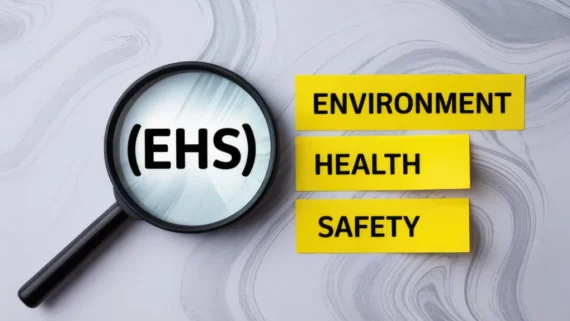
How to Choose Incident Management Software in 2020
Workplace incidents – both fatal and non-fatal – are on the rise. According to the Association of Workers’ Compensation Boards of Canada (AWCBC), in 2018 there were 264,438 Lost Time Claims and 1,027 fatalities in workplaces and worksites across Canada. These figures are the highest since 2008 and the number of both fatal and non-fatal incidents has been rising steadily year-on-year since 2015. However, when it comes to Lost Time Claims, the figure reported does not give a true picture of the actual number of safety incidents. Lost Time Claims only encompass “accepted time-loss injuries” – meaning those which result in the worker being compensated for the injury itself or loss of wages resulting from the incident. This means that many injuries – those considered minor or only requiring first aid treatment, for example – are not included. The true figure for injuries in workplaces across Canada, therefore, is undoubtedly much higher. With industries such as Construction, Manufacturing, and Transportation at particular risk of incidents and accidents – especially fatal ones – we take a look at how incident management software can help to protect your company in 2020.
Best Practices for Choosing an Incident Management Software
Incident management software enables a company to track, monitor, analyze – and therefore reduce – the incidents that occur within the organization or at specific work sites. This is invaluable for helping to make your workplace as safe as possible for your workers, and for avoiding the sorts of costly compensation claims and lost time that often result from serious safety incidents. To get the most out of any incident management software, make sure to look out for the following features.
Mobile-Friendly
We live in a mobile world. Tablets, smartphones, and other mobile devices are playing an ever-greater role in how we go about our lives. It stands to sense that this should extend to your incident management software. This is a factor that is more important than just convenience. If your incident reporting tools are not mobile-compatible then you run the risk of incidents not being properly reported. If your team has to wait until they are at a computer or laptop before they can report the incident, then vital details may well be missed. They may even forget to report the incident at all, meaning you are losing out on crucial information that can help you avoid similar – or worse – incidents in the future.
Intuitive and User-Friendly
If a software tool is confusing or difficult to use, then people will not want to use it, it’s as simple as that. To get your workers on board with any incident management software, it needs to be both user-friendly and intuitive. The easier it is to operate – and the more in tune it is with what your workers are trying to do – the more likely people are to interact with it. This is particularly important when it comes to safety incidents. The period of time right after an incident is when people are at their most stressed. Having a software tool that is easy to navigate avoids adding to this stress and ensures that they report the relevant details as quickly and accurately as possible.
Robust Reporting
Solid reporting features should be the backbone of any incident management software. Not only do these allow you to gain an overview of the incidents that have already occurred, they also enable you to zero in on specific areas of your company that might be particularly at risk of safety incidents. Good reporting tools mean you can compare different departments, areas, or worksites within your firm to see where any problems may lie. You can then address these points of concern as quickly as possible to avoid future incidents.

Make sure that any software you choose includes the capability to generate and display these reports easily and clearly. Any incident management software that requires you to dig for this type of information should be given a wide berth.
Easy Integration
Another important factor to consider when choosing incident management software is how easily it will integrate with your existing tools like a learning management system, or digital forms. You need to be confident that it will work smoothly with any other safety and training software that you already use within your company. Having siloed software for each different task is both time-consuming and counter-productive, and nothing is more frustrating than the functionality and usefulness of a new tool being hindered by a lack of integration. Check before you sign up for a new tool that integration with your existing systems will not be an issue. Otherwise, you could well end up with an expensive piece of software that you are unable to get the most out of.
Automated Alerts and Notifications
Automation is a huge timesaver for companies across the world and this should absolutely be the case for any incident management software you choose too. Features such as forwarding incident reports to supervisors and managers and automatically sending notifications to those who need them will take a lot of work off your employees’ plates. Not only that but automating these tasks reduces the chance that a worker will forget to notify the relevant people or forward important reports when an incident has taken place. Keeping people in the loop in regards to safety incidents is key to reducing them in the future, so effective automation tools are crucial.
With fatal and non-fatal incidents on the rise in companies across Canada, it is more important than ever to keep tabs on how your organization is doing. An incident management system is a critical tool in helping you achieve this but you need to ensure that whichever software you choose meets your needs. It should be mobile and user-friendly to get the maximum number of people on board with using it, easy to integrate with your existing software, and capable of efficient automation. Good, solid, extensive reporting features are an absolute must if you want to understand what type of incidents are happening, why they are happening, and how you can avoid them in the future. Hopefully this guide will help you to choose the best incident management software available to your company in 2020.






























